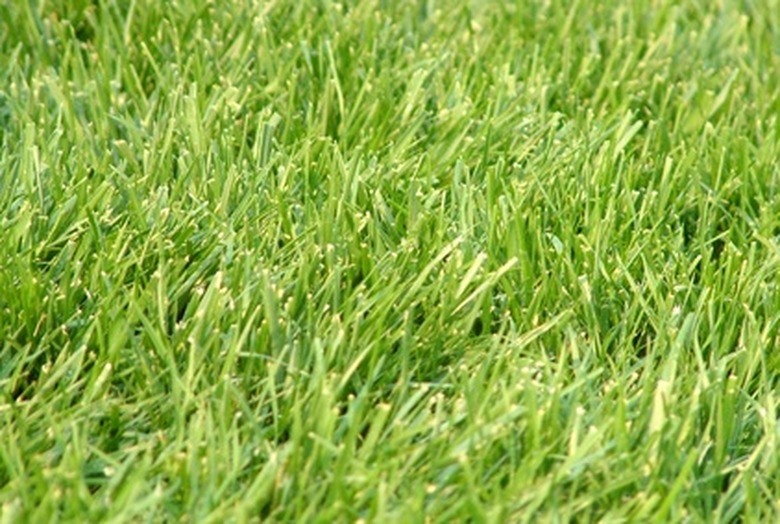How To Transplant St. Augustine Grass
St. Augustine is a turf grass that is suitable for planting in the warm, humid climate commonly found on the Gulf Coast of the United States. Although most varieties produce sterile seed or seed with a very low germination or sprouting rate, it spreads rapidly from stolons. A stolon is a green growth or branch that extends from the root base of the plant and forms roots in the soil. New plants form along joints in the stolon branch where the new roots are located. Patches of St. Augustine grass that are removed from the ground with the dirt attached to the roots are known as sod. To establish a lawn, the sod is put down on a lawn in a patchwork fashion and it spreads by stolons, eventually covering the lawn.
Step 1
Prepare the area to transplant the St. Augustine grass by removing all dead and diseased turf grass down to the bare soil. Rake the area clean so the new transplant has contact with the soil. Add a 1/2-inch-thick layer of compost and lightly work into the top inch of soil. Rake the dirt and compost mixture smooth and dampen with a fine spray of water until moist.
- St. Augustine is a turf grass that is suitable for planting in the warm, humid climate commonly found on the Gulf Coast of the United States.
- Patches of St. Augustine grass that are removed from the ground with the dirt attached to the roots are known as sod.
Step 2
Locate an area of healthy St. Augustine grass that is growing thickly and does not contain weeds and water evenly. If you are transplanting the grass to a sunny area, find a section of St. Augustine grass growing in a sunny area to avoid transplant shock. A section of St. Augustine growing in a shady area will burn if suddenly exposed to hot summer sun. St. Augustine can be transplanted any time of the year as long as sufficient moisture is provided to the newly transplanted grass.
Step 3
Separate the patch from the turf grass by pushing the shovel into the ground around the edges of the patch of St. Augustine you would like to move. For best results, divide the patch to be moved into several sections with each patch the approximate size of the shovel blade. As you push the blade into the ground, push the shovel back and forth to loosen the St. Augustine patch and the roots form the larger turf grass planting. Push the blade into the ground between four and six inches.
- Locate an area of healthy St. Augustine grass that is growing thickly and does not contain weeds and water evenly.
- As you push the blade into the ground, push the shovel back and forth to loosen the St. Augustine patch and the roots form the larger turf grass planting.
Step 4
Push the shovel into the ground under the patch of St. Augustine you would like to relocate at a depth of three to four inches. It should slide easily under the patch of St. Augustine grass and the patch of sod should dislodge easily from the other turf grass. Leaving the patch of St. Augustine grass on the shovel blade, use the shovel blade to transport to the other location. If you cannot use the shovel blade, then place in a wheelbarrow or other container. Do not pull the patch of sod apart. Leave the roots and soil intact as much as possible.
Step 5
Place the new piece of sod on top of the moistened soil and compost mixture. Use gentle pressure to be sure the roots of the St. Augustine transplant has contact with the soil. Add water and keep moist, but not wet, until established.
- Push the shovel into the ground under the patch of St. Augustine you would like to relocate at a depth of three to four inches.
- It should slide easily under the patch of St. Augustine grass and the patch of sod should dislodge easily from the other turf grass.
Tip
Do not add high nitrogen fertilizers to newly transplanted sod because it damages the new roots of the grass. Fertilize after the turf grass is actively growing to the point where it needs mowing.
Things Needed
- St. Augustine grass
- Shovel
- Rake
- Compost
